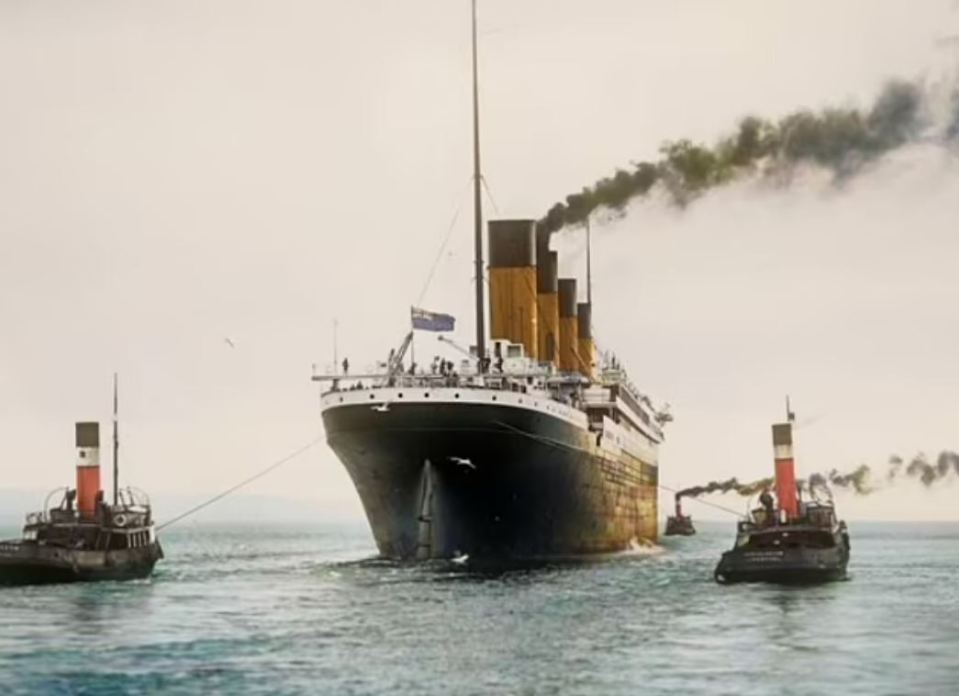INCREDIBLE new footage shows the Titanic in colour for the first time – offering a glimpse into what life on board the doomed ship looked like.
A new documentary produced by Channel 4 brings the cursed maiden voyage of the “unsinkable” RMS Titanic to life using the only known existing footage.
Channel 4The incredible new documentary will show the only existing footage of the ship in colour[/caption]
Channel 4A real picture of one of the gyms inside the Titanic[/caption]
Channel 4Picture of a first-class suite inside the dream starliner vessel[/caption]
The new history series Titanic in Colour will feature friends and family of those who died on board – revealing the stories that previously went untold.
It is based on the only existing clip of Titanic from February 3, 1912 – just weeks before the starliner met with the unthinkable tragedy.
Considered to be the best-known record of the vessel, the clip comes from Francis Browne – one of the seven passengers who got off the ship in the middle of the journey in Ireland, the Mail reports.
Using his camera, the then-student managed to shoot the life on board the mighty ship that was once considered to be unsinkable.
Experts managed to restore the minute-long clip – which was kept in an archive for more than a century – and added colour to it.
The amazing clip features the incredible starliner – the biggest of its time – sailing in full action.
Tiny people on board can be seen in the footage, showing how mighty the ship really was.
Dr Lesley-Anne Beadles, a historian featured in the documentary, said: “It does have the feel of something very unofficial, very behind-the-scenes, very sort of making of.
“The White Star line was completely about appearances, so it does have that feel of something that maybe we weren’t quite supposed to see.”
The colour footage also reveals that, unlike the rest of the ship, the wheelhouse has been painted white – a very different image than what has been shown to the public till now.
The first episode of Titanic in Colour will be broadcast on Channel 4 on Sunday 4 August at 8pm.
RMS Titanic sank on April 15 during its maiden voyage to New York from Southampton.
It was built by the Harland and Wolff shipyard in Belfast and was the largest passenger ship the world had ever seen.
The starliner set off on the journey on April 10, 1912, due to arrive in New York City on April 17.
But just five days later, it collided with an iceberg in the North Atlantic with around 2,224 passengers and crew on board.
Fascinating facts about Titanic
TITANIC was the world’s largest passenger ship when it entered service, measuring 269 metres.
It was the largest man-made moving object on Earth.
It burned around 600 tonnes of coal a day and almost 100 tonnes of ash were ejected into the sea every 24 hours.
There were 20,000 bottles of beer on board, 1,500 bottles of wine and 8,000 cigars – all for the use of first-class passengers.
Up to 246 injuries and two deaths were recorded during the ship’s 26-month construction in Belfast.
The last supper served to first-class passengers consisted of 11 courses.
First-class passengers were given a book containing 352 songs, with musicians on board required to know all of them in case requests were made.
Titanic’s chief naval architect Thomas Andrews said to Captain Edward John Smith the ship would certainly sink.
James Cameron’s 1997 film Titanic crossed more than £1.5bn in revenue, won 11 Oscars and is one of the highest-grossing films of all time.
A warning was given by staff members who sent the message: “Iceberg, right ahead.”
But tragically the warning came too late and 37 seconds later, Titanic struck the iceberg – tearing a series of holes along the side of the hull.
The iceberg was around 100 feet tall and came from a glacier in Greenland.
Six of the watertight compartments at the front of the ship’s hull were breached – five of them flooding within the hour.
Three hours after the Titanic hit an iceberg, it lay at the bottom of the Atlantic Ocean nearly 4km down.
The wreck lay undiscovered until 1985, when it was found by a Franco-American expedition 370 miles off the coast of Newfoundland in Canada.
The bow and stern sections lie about 600m apart, with the bow by far the more intact of the two.
They are 12,500ft below the surface and the ship’s bow penetrated 18 metres into the seabed.
Channel 4A boy pictured while playing on the deck of the ship[/caption]
Channel 4The new history series Titanic in Colour will feature friends and family of those who died on board[/caption]

